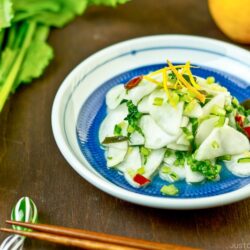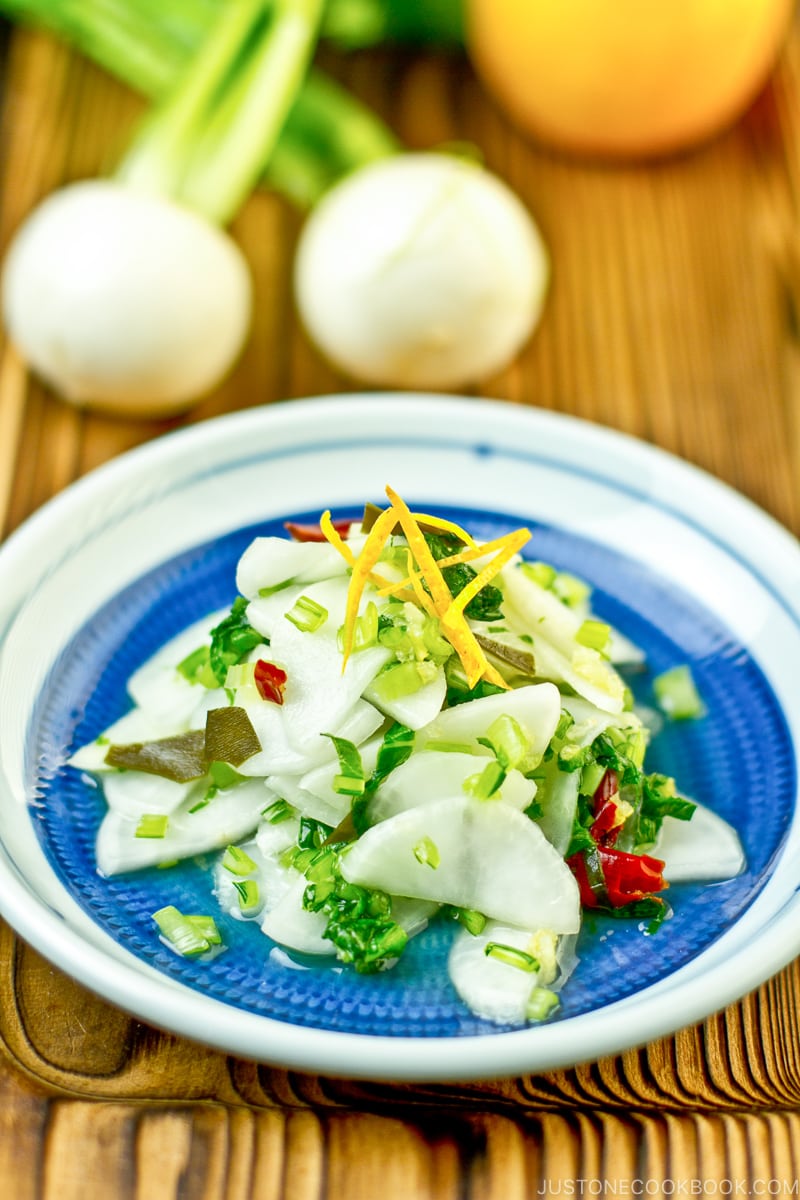
I had received several requests from some of the readers that they would like to make Tsukemono, Japanese pickles. In Japan, Tsukemono is always served with steamed rice and considered as an important garnish or accompaniment for meals. There are even Tsukemono specialty stores in Japan, where we can buy all different types and varieties.
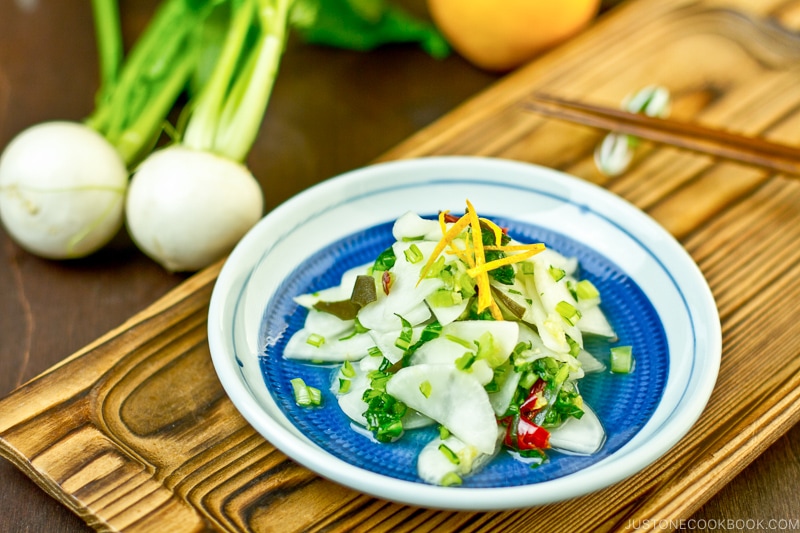
Although we call it “pickles”, Japanese pickles are actually considered “preserved vegetables”. Unlike how American pickles are prepared, Tsukemono is not pickled in distilled vinegar. For pickling the Japanese way, we use salt, soy sauce, miso, rice bran (nuka), or sake lees (sake kasu).
Today I’m sharing Asazuke, a type of Tsukemono. Asazuke literary means ‘shallow pickling’ for its short period of pickling time. Asazuke is commonly prepared at home because it’s easier and simple to make as opposed to Tsukemono, which takes more effort to prepare and longer waiting period.
I used Tokyo turnips called kabu as the main vegetable, but other commonly used vegetables for Tsukemono include cucumbers, daikon (Japanese radish), napa cabbage, and eggplant. This recipe calls for yuzu, a citrus fruit widely available in Japan, Korea, and China. If you cannot find yuzu in your area, you can substitute with lemon zest/juice for this recipe. There are quite a lot of Japanese dishes with yuzu flavor and one of our favorite Japanese restaurants use it on a few of the special sushi they serve. I hope you enjoy making this version of Asazuke at home!
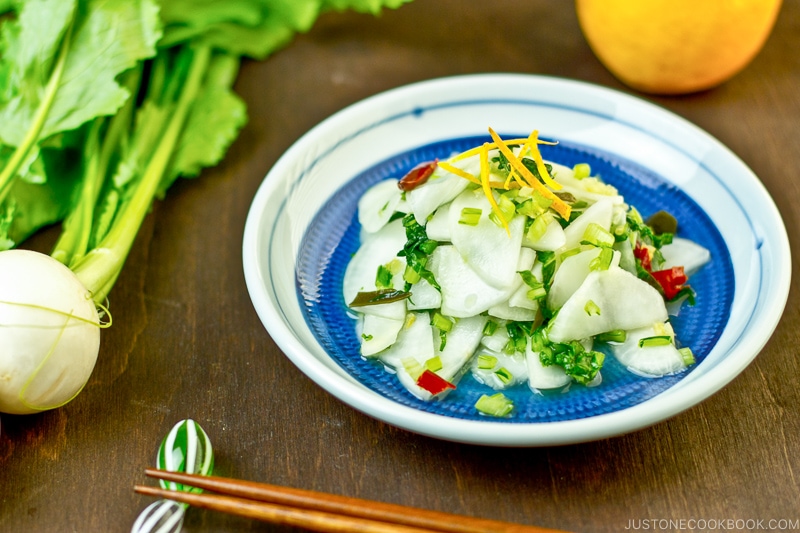
Pickled Turnip with Yuzu
Ingredients
- 3 Japanese turnips (kabu) (leaves attached; you can also use cucumbers, daikon, or napa cabbage)
- 1 piece kombu (dried kelp) (1½ x 1½ inches, 3.8 x 3.8 cm per piece)
- ½ dried red chili pepper
- 1 tsp yuzu zest (or lemon zest)
- ½–1 tsp Diamond Crystal kosher salt
- 1 Tbsp yuzu juice (extract) (or lemon juice; optional)
Instructions
- Before You Start…Please note that this recipe requires 3 hours of pickling time.
- Wash 3 Japanese turnips (kabu) carefully and peel the skin. Cut in half or quarters, depending on the size, and then slice thinly. For the leaves, cut them into ½-inch (1.3-cm) pieces.
- Cut 1 piece kombu (dried kelp) into small strips.
- Cut ½ dried red chili pepper into half and remove seeds. Keep the seeds if you like it spicy.
- In a resealable plastic bag, add the turnip slices and leaves, kombu, red chili pepper, 1 tsp yuzu zest, ½–1 tsp Diamond Crystal kosher salt, and optional 1 Tbsp yuzu juice (extract). Mix and rub well with your hands from the outside of the bag.
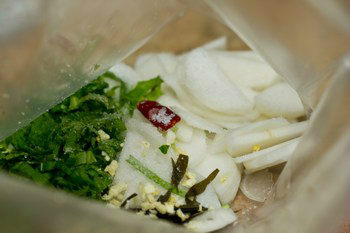
- Remove the air and seal the bag. Keep in the refrigerator for at least an hour, preferably 3–4 hours, or even overnight.
- To serve, squeeze the vegetables with both hands to remove the pickling solution. Enjoy!
To Store
- You can keep the pickles in an airtight container after squeezing out the solution. Store in the refrigerator for up to 2–3 days.
Nutrition
Did you make this recipe?
Tag @justonecookbook on Instagram so we can see your delicious creation!


